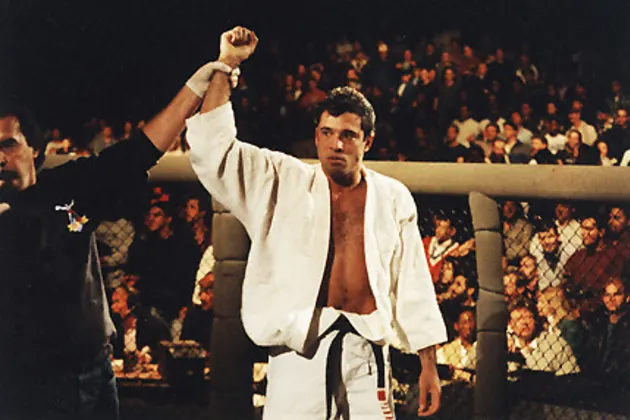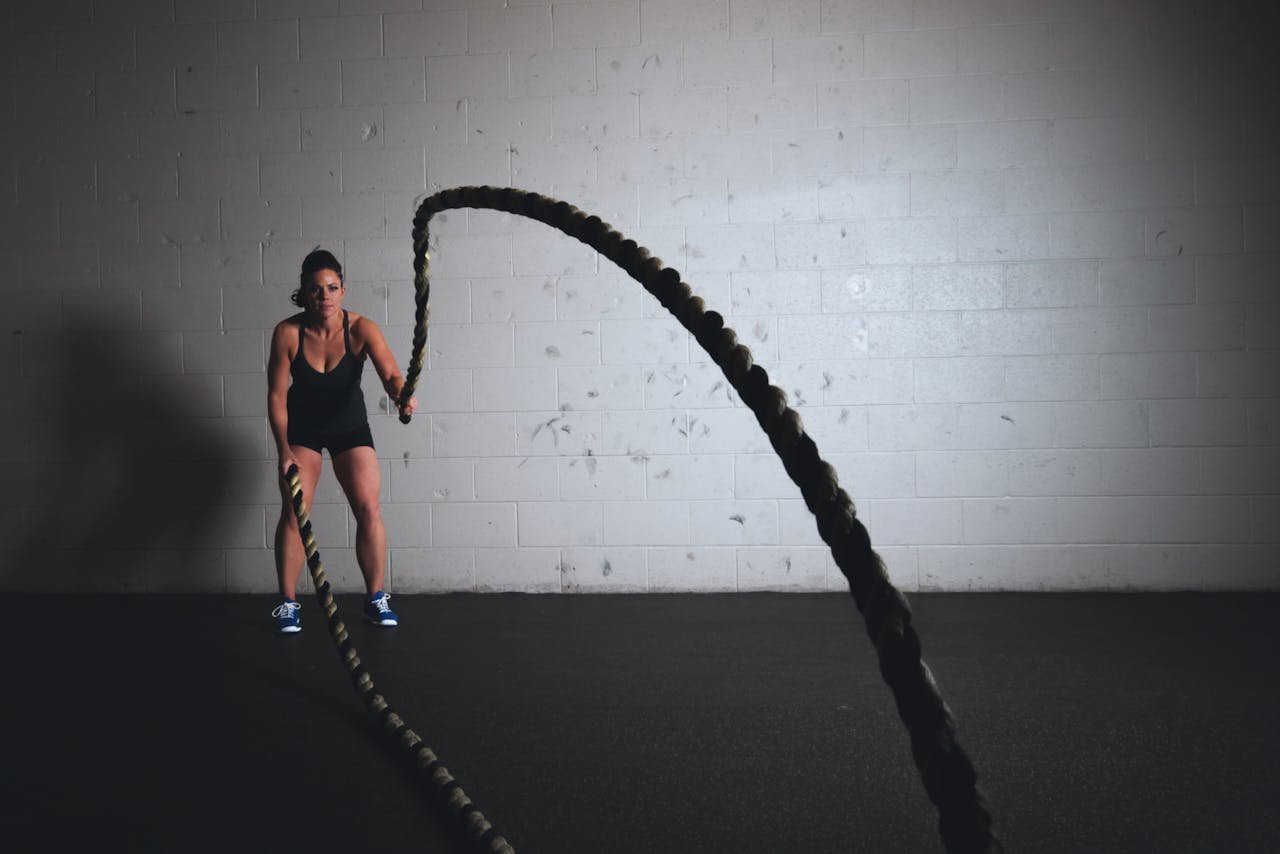The Art of Brazilian Jiu-Jitsu
I have been training in Brazilian Jiu-Jitsu (BJJ) for the past year and a half. Here is what I’ve learned about the sport: its history, attire, training and studying.
Jiu-Jitsu History
First, the art of BJJ was developed so smaller guys could utilize balance and technique to overcome power and size.
It’s what made the UFC famous. In the early days, Royce Grazie, a visibly smaller guy, was submitting many large opponents.

I remember being fascinated as a young fan of the sport… Who is this guy walking out in a GI submitting these monsters?
Of course, at that age, I was unaware of the advantages of size. I’m not the only one either. But as a kid, you think strength is equal… unfortunately, one way or another, you’ll find out it’s not.
Jiu-Jitsu Attire
There are two main areas of focus when competing in jiu-jitsu.
One is competing with the GI ‘uniform,’ including the belt.
Two, competing in No-GI, which is as it sounds. However, you do need compression shirts and shorts/pants. Also, the shorts/compression pants cannot have zippers.
GI
The GI is part of the uniform that the governing body, IBJJF, regulates to ensure that sizes meet the minimum criteria when competing.

The GI has three main pieces: a jacket or a kimono, pants, and a belt.
Different materials, from weaves to material weights, represent the GI.
GI – Weaves
The GI is made with various materials and threaded using different weaves.
Often, GMS is referenced, which stands for Grams per Square Meter, or the weight of the GI. The less GMS, the lighter the GI itself. Next up is the Weave itself…

The GI weave has two distinct features: the Wrap and the Weft. Depending on how the weave is intertwined, it will result in different weaves such as; single, double, pearl and gold.
Let’s look at the various Weaves and what they look like.
Single-Weave: one set of warp that includes the weft woven through it. This is the most simplistic form of fabric weave.


Double-Weave: two-layer sets of warps and one, sometimes more than one weft woven through it, which is the ‘double-weave.’
Peral-Weave: This is between the single and gold weave. The Pearl Weave has multiple pearls aligned together. To achieve this, a looser and wider weft is intertwined with a tighter weft. The alternating fashion created the appearance of raised pearl bumps. This particular weave is most common in GIs.


Gold-Weave: This is a hybrid of the single and double weave, known for its ladder appearance. When wider, heavier warp threads are interspersed between thinner threads, the looser weft is woven over an entire section of the thinner warp threads before weaving through another section and then jumping back over again.
Pants Fabric:
Overall, the pants have fewer options compared to the GI. The weight system used is typically in Ounces and is the same as GSM, meaning the lower the number, the less weight the pants have. There are Risptop, Cotton or a mix for Jiu-Jitsu pants.
Ripstop: Woven with a special reinforcing technique and superior to tearing or ripping. The pants themselves are light but durable and easy to recognize vis the squared pattered.


Cotton: Woven with various degrees of thickness. They are lightweight and range to military-grade cotton. Cotton was the dominant choice before Ripstop pants were created.
Sizes:
If you are competing in a sanctioned tournament and a lower weight bracket, you may want to opt for the lighter GI instead of the heavier constructed option. This will save you from the dreaded weight cut or at least reduce the weight you need to lose before the match.
Below is a graph showcasing the height x-axis and weight y-converging to the size of GI you should be trying based on that. These are for adults only.

Belts
In Jiu-Jitsu, the belt ties your GI and displays your ‘level’ of BJJ. For adolescents, there are separate coloured belts from those for adults. The graphic below explains the colour hierarchy of belts.

Now, because you’re a certain colour belt, it doesn’t mean you’re better or not as good as the other person.
You see… BJJ is an individual sport that relies on the surrounding team for growth and support.
Factors such as age, training time, fitness level, and understanding of technique all play a role.
Each school has its own way of grading, either using stripes, which are like steps toward the next belt colour, or no stripes at all.
No-GI
In the No-GI world, two articles of clothing are needed: compression shorts or pants and a T-shirt—or long-sleeve compression shirt.

Make sure the pants or shorts do not have zippers. Zippers are not allowed, and for good reason. They can get caught, cut, or pierce you or your opponent.
Jiu-Jitsu Training
Whether you are a white belt or black bet, training is the most crucial aspect of BJJ.
IBJJF Rules
Download the official IBJJF Rule Book
Submissions
Submissions are part of the game in Jiu-Jitsu. Submissions refer to positions where two things could happen.
- Circulation of blood to the brain is cut off – this is called strangulation, but it’s referred to as choking (which is incorrect).
- Broken limbs or muscle/ligament tears. When putting a certain body part in an unnatural bent position with enough force, you can break someone’s limb or tear something.
You must understand when you should be tapping to avoid serious injury. As you train and are put into these positions, you will become familiar enough when the right time is… don’t push it too far, or you can risk serious injuries.
Technique
Every school has its own way of teaching techniques. It could be a system that chains together every class, or it could be position-based or submission-based.
Typically, you’ll start with a warmup of some sort, such as jogging, shrimping, shoulder rolls, etc. The point is to get the heart rate up and warm up our muscles to avoid injury.
At this point, the professor will teach the lesson. This is the bulk of the class, maybe 80% worth, give or take. Remember, each school can be different. Following that, we do a round or two of positional, practicing what we learned.
After positional, we bow out. This means shaking hands with everyone and getting ready to roll if you choose to do so.
Rolling
Rolling in Jiu-Jitsu means having a match with your training partner after class is officially done. You spar or what we call roll for five (5) minutes. If you tap or submit, you start again until the time runs out.
Once the five (5) minutes are up, you find the next person to repeat the process. This can go on for multiple opponents if you choose.
Rolling allows you to practice what you learned, experiment, and problem-solve what works and when versus what doesn’t.
The aim here is not to go 100% but really try to understand how to attack or defend attacks. This is a lot harder than it seems, as the sport has countless movement combinations.
Studying
The student never stops learning in JiuJitsu. There are so many things to learn, from positions on defence to positions on offence and much more. There are many resources online, like YouTube (free) and BJJ Fanatics (which isn’t free), from which to learn.
YouTube Favourites:
Final Thoughts
Jiu-Jitsu has become a passion of mine. It is great in terms of self-defence. Confidence. Exercise.
It’s a sport that is highly addicting from a fan perspective but also as a competitor.
This post examines BJJ’s history, the uniform used in GI and No-GI formats, and the competition rules.

